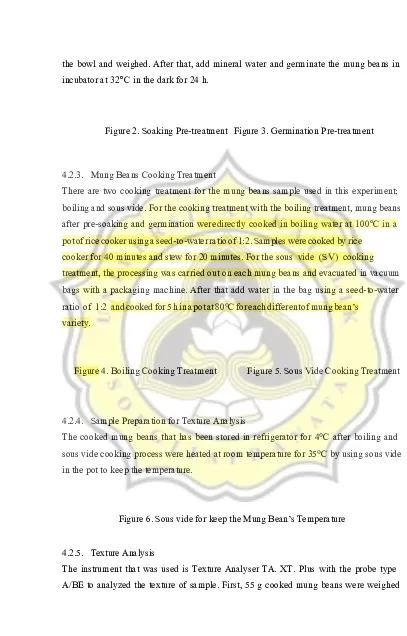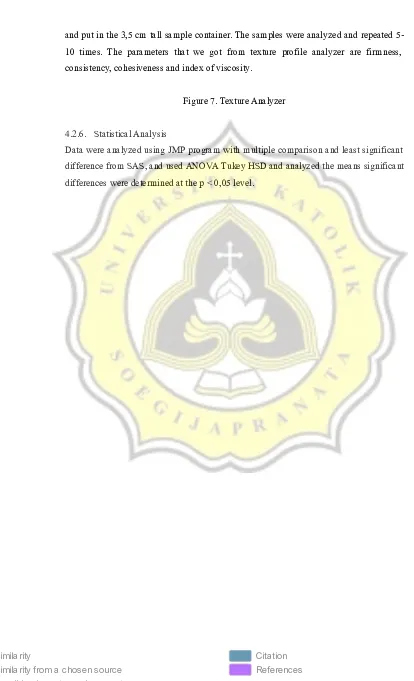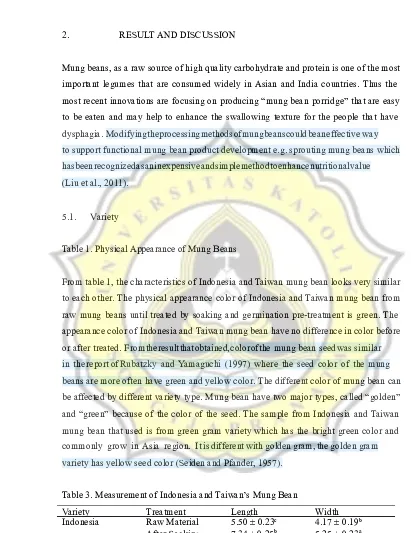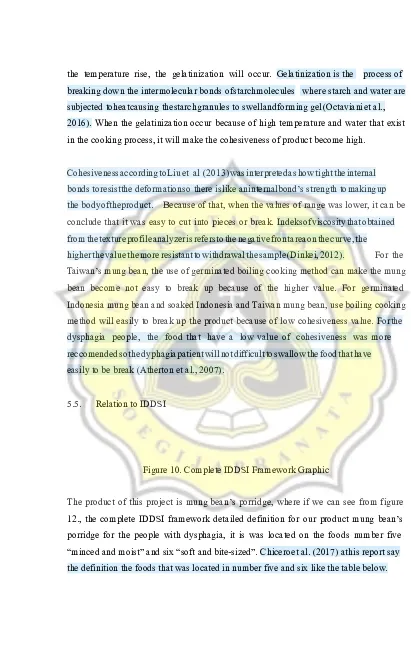97.07%
Originality
2.93%
Similarity
3
Sources
Web sources: 1 source found
1. https://academic.oup.com/pcp/article/55/9/1521/2756388 0.83%
Excluded as citation or reference Web sources: 63 sources found
45. https://www.atrainceu.com/course-module/2873706-161_adrd6-module-13 0.53%
15.I1.0034 - Evan Fajar Alim-6 JUNI.docx 2.1%
15.I1.0034 - Evan Fajar Alim-9 JUNI.docx 2.1%
Excluded as citation or reference Library sources: 71 sources found
Brigitta-13 MARET.docx 0.57%
KIMMY-26 FEB.docx 0.57%
11.92.0032-Lusia Laras Budi Kristanti-14 MARET.docx 0.57%
Thesis-HIV.docx 0.36%
9. proposal Laksmi - 2.3.18.docx 0.36%
14.E3.0040- Made Ayu W. P-3 MARET.docx 0.36%
JOICE KARTIKA SARI-26 FEB.doc 0.36%
YOANA-22 MARET (1).doc 0.36%
13.70.0117_Kristina Galuh Sista S-23 MARET REVISI.docx 0.36%
Claracia Vina 28 Maret.doc 0.36%
10.92.0017 AGNES ANGI DIAN WINEI-8 MARET.doc 0.36%
13.40.0179-Nurul Hani Fithriana.docx 0.32%
Tesis - Yoke Indira - 14e30061 - 4 DES.docx 0.32%
KP-ANTONIA CINDY-4 DES.docx 0.32%
1B 16.E1.0051-TAN ANGELICA STEFANIE - UTS - 01 & BU LASTRI.docx 0.32% 14.E1.0031-BRIGITTA VIONA GALUH-UAS-01 2016-AUGUSTINA SULAST.docx 0.32%
LAURENTIA-3 FEB.docx 0.32%
25. fungsi daun untuk jamu Classification of Plant Moringa L.docx 0.32%
14 12ss Tamara Ivanka 16e10122.docx 0.32%
ADE PUTRY SELVIANY CUNAIDY 3 April.docx 0.2%
14.G1.0042 - Evelyn Rosalina Berlian-31 JAN.docx 0.2%
Timoti Raharja 28 Maret.docx 0.2%
13.40.0094 Donni Suryo Seto Nugroho.docx 0.2%
FEBRI SATRIO N. (13.12.0079) & PUTRA BINTANG R. (13.12.0079).docx 0.2%
ADE PUTRY SELVIANY CUNAIDY BARU 3 April.docx 0.2%
Vicky Widia Yusrina-13.70.0146-22 MARET.docx 0.18%
Vicky Widia Yusrina-13.70.0146-23 MARET.docx 0.18%
Vicky Widia Yusrina-13.70.0146-22 MARET (1).docx 0.18%
Putri Bella-15NOV.docx 0.16%
13.12.0058 Frans Vrata & 13.12.0077 Prayoga Iwan 26-11-2017.docx 0.16%
1. RESEARCH METHODOLOGY
4.1. Materials
Materials and tools used were mung bean seeds (Vigna radiata L.), mineral water, bowl,
pot, analytic scale, wood hammer, refrigerator, rice cooker, sous vide, incubator, sample
container, vacuum bags, packaging machine, texture analyzer, and microscope.
4.2. Methods
4.2.1. Mung Beans Variety
There are two variety of mung beans sample used in this experiment. There are the
Indonesia’s mung bean and Taiwan’s mung bean bought from the Carrefoure store in the
New Taipei City, Taiwan.
4.2.2. Mung Beans Pre-treatment
There are two pre-treatment for the mung beans sample used in this experiment; soaking
and germination. For the soaking pre-treatment, a 800gramamountofmungbeansfor
each variety was weighed and washed using water for 3 times. Washed mungbeans were
put into bowl and then weighed. After that the mineral water was added until the mung
beans are soaked. The mung beans were soaked in mineral water for24hat4°C.For
thegerminationpre-treatment,a800gramamountofmungbeansforeachvariety was
weighed and washed using water for 3 times. Then, the washed mung beans were put in
the bowl and weighed. After that, add mineral water and germinate the mung beans in
incubator at 32 C in the dark for 24 h.°
Figure 2. Soaking Pre-treatment Figure 3. Germination Pre-treatment
4.2.3. Mung Beans Cooking Treatment
There are two cooking treatment for the mung beans sample used in this experiment;
boiling and sous vide. For the cooking treatment with the boiling treatment, mung beans
after pre-soaking and germination weredirectly cooked in boiling water at 100 C in ao
pot of rice cooker using a seed-to-water ratio of 1:2. Samples were cooked by rice
cooker for 40 minutes and stew for 20 minutes. For thesous vide (SV) cooking
treatment, the processing was carried out on each mung beans and evacuated in vacuum
bags with a packaging machine. After that add water in the bag using a seed-to-water
ratio of 1:2 and cooked for 5 h in a pot at 80°C for each different of mung bean’s
variety.
Figure 4. Boiling Cooking Treatment Figure 5. Sous Vide Cooking Treatment
4.2.4. Sample Preparation for Texture Analysis
The cooked mung beans that has been stored in refrigerator for 4°C after boiling and
sous vide cooking process were heated at room temperature for 35°C by using sous vide
in the pot to keep the temperature.
Figure 6. Sous vide for keep the Mung Bean’s Temperature
4.2.5. Texture Analysis
The instrument that was used is Texture Analyser TA. XT. Plus with the probe type
and put in the 3,5 cm tall sample container. The samples were analyzed and repeated
10 times. The parameters that we got from texture profile analyzer are firmness,
consistency, cohesiveness and index of viscosity.
Figure 7. Texture Analyzer
4.2.6. Statistical Analysis
Data were analyzed using JMP program with multiple comparison and least significant
difference from SAS, and used ANOVA Tukey HSD and analyzed the means significant
2. RESULT AND DISCUSSION
Mung beans, as a raw source of high quality carbohydrate and protein is one of the most
important legumes that are consumed widely in Asian and India countries. Thus the
most recent innovations are focusing on producing “mung bean porridge” that are easy
to be eaten and may help to enhance the swallowing texture for the people that have
dysphagia. Modifyingtheprocessingmethodsofmungbeanscouldbeaneffective way
to support functional mung bean product development e.g. sprouting mung beans which
hasbeenrecognizedasaninexpensiveandsimplemethodtoenhancenutritionalvalue
(Liu et al., 2011).
5.1. Variety
Table 1. Physical Appearance of Mung Beans
From table 1, the characteristics of Indonesia and Taiwan mung bean looks very similar
to each other. The physical appearance color of Indonesia and Taiwan mung bean from
raw mung beans until treated by soaking and germination pre-treatment is green. The
appearance color of Indonesia and Taiwan mung bean have no difference in color before
or after treated. Fromtheresultthatobtained,colorofthe mung bean seedwas similar
in the report ofRubatzky and Yamaguchi (1997) where the seed color of the mung
beans are more often have green and yellow color. The different color of mung bean can
be affected by different variety type. Mung bean have two major types, called “golden”
and “green” because of the color of the seed. The sample from Indonesia and Taiwan
mung bean that used is from green gram variety which has the bright green color and
commonly grow in Asia region. It is different with golden gram, the golden gram
variety has yellow seed color (Seiden and Pfander, 1957).
Table 3. Measurement of Indonesia and Taiwan’s Mung Bean
Variety Treatment Length Width
Taiwan Raw Material 5.26 ± 0.15c 4.50 ± 0.33b After Soaking 7.50 ± 0.21b 5.27 ± 0.22a After Germination 8.46 ± 0.28a 5.39 ± 0.23a
*length and width in cm unit
From table 3., the measurement before and after being treated for the mung beans
showed a big difference in the size. The Indonesia and Taiwan mung bean variety giving
a significant difference at any treatment on the length size. From the width size, both
Indonesia and Taiwan mung bean variety give a significant difference before and after
being treated by soaking and germination. However, the width size among soaking and
germination treatment did not give a significant difference. The different size of the
mung bean’s figure can be seen in table 2. The growth of the mung bean itself was
affected by some factors like temperature, light, and the availability of water. Soaking
and germination treatment is used water on the method. The water that used at soaking
and germination treatment was absorb by mung bean so it will makes the size of mung
bean growth. The temperature that used in soaking is 4 C and the germination is 32 C.o o
The lower the temperature, the slower the growth of the mung bean and vice versa. The
darker of the mung bean’s storage will make the mung bean to growth faster. The
photosynthesis reaction in the mung bean need light to produce nutrition for
germination and growth. When the photosynthesis reaction didn’t occur, it will turn into
etilation process because of the absence of light. Etilation will use mung bean’s nutrition
tomakethegrowthofthestemsproutsgrowfastertosearchthelightsource (Islam et
al., 1993).
Graphic 1. Texture Analysis Comparing Variety of Mung Beans
From graphic 1., there was four parameters were obtain from texture profile analyzer.
For people with dysphagia, firmness and cohesiveness plays an important role in
strength needed to bite and makes the food into pieces for the swallowing process.
Based on the data results, it is shown that different cooking proccess from different
variety of mung beans for the ratio 1:2 (w/w) have a significant different of the
1., we can see that the firmness which shows the hardness parameter from different
variety has shown different result with different ratio of water. With the use of different
cooking methods especially from sous vide method, the Indonesia’s mung beans were a
little harder than Taiwan’s mung bean. But with the traditional cooking with boiling, the
Taiwan’s mung beans have harder texture. The Indonesia’s mung bean itself was one of
the important food crop legumes after groundnut and soybean in Indonesia. The statistic
Indonesia (2016) said that the planting centre of this Indonesia’s mungbean is located in
West Java, Central Java, East Java, South Sulawesi, East and West Nusa Tenggara
whereifwecan seefromthegeography,thelocationofIndonesiaandTaiwan’sitself
was very diferrent. This will affect the resulting product that also has different
characteristics especially on the mung bean’s texture. HumidityinIndonesiaisusually
between70-90% becauseit is locatedintropicalregions,butfor Taiwanitislocatedin
both subtropical and tropical regions with relatively high temperature and relative
humidity year-round (Lei et al., 2002).
5.2. Pre-treatment
Graphic 2. Texture Analyse Comparing Pre-treatment of Mung Beans
Graphic 2 compares the pre-treatment of the mungbeans. It can be seen that the firmness
of germinated or soaked mung bean is not significantly different. Germinated and boiled
Taiwan mung bean have harder texture than germinated and boiled Indonesia mung
bean. Soaked and boiled Taiwan mung bean have harder texture than soaked and boiled
Indonesian mung bean. Germination and soaking pre-treatment with boiling cooking
method show that Indonesia mung bean became softer than Taiwan mung bean. Using
germination and soaking pre-treatment with sous vide cooking method in Indonesia and
Taiwan mung bean didn’t give a significant difference on firmness parameter. The
soakingandgerminationpre-treatmentthatusedisto facilitatethecookingprocessin
mung bean especially to improve cooking quality (Wah et al. 1997). The temperature of
soaking and germination pre-treatment can affected the firmness. The lower the
(Dewi,2014). That’s why the soaking pre-treatment show more high firmness than the
germination pre-treatment. The water that used in pre-treatment make the mung bean
absorb the water. More water absorb by mung bean will softer the mung bean’s texture.
The starch content that contained in the mung bean will make the uptake of water is
difference. As high the starch content in material, the higher the absorption of water
occur. Thehigherwatercontentinfoodwillmakethefirmnessthatrelatedtohardness
of texture become lower (Octaviani et al, 2016).
The cohesiveness parameter for germinated and boiled Indonesia mung bean didn’t
show a significant different on germinated and boiled Taiwan mung bean. The
cohesiveness for germinated and sous vide Indonesia mung bean show a significant
difference with germinated and sous vide Taiwan mung bean. Using soaking
treatment with boiling or sous vide cooking method show a significant difference in
cohesiveness parameter. Soaking and boiled Taiwan mung bean will make the product
become more cohesive than soaking and boiled Indonesia mung bean. Soaking and sous
vide Taiwan mung bean will make the product become more cohesive than soaking and
sous vide Indonesia mung bean. Taiwan mung bean become more cohesive with used of
soaking pre-treatment than germination pre-treatment. Using germination pre-treatment
to Indonesia mung bean will make the cohesiveness of product increase than soaking
pre-treatment. During germination, starch is broken down to maltose and dextrin. The
proteins arebroken down to amino acids, poly peptidesand peptides (Kauret al, 2015).
Starch inside mung bean would absorb water that used for pre-treatment so it will make
the cohesiveness become higher. Cohesivenessitselfisthe forcerequired tomovefood
which has bonded to the mouth or hands during chewing (Chicero et al., 2017).
5.3. Bean to Water Ratio
From figure 8, the soaked and the germinated Indonesia and Taiwan’s mung beans with
the boiling cooking method especially on the ratio 1:2 looks paler than the mung beans
with the ratio 1:1. With the boiling cooking method, the Indonesia’s mung bean on ratio
1:1 have more dark green color compared than the Taiwan’s mung bean. It was the same
1:2 in every pre-treatment the mung beans looked bigger than the ratio 1:1. From figure
9, the Indonesia and Taiwan’s mung bean with different pretreatment on ratio 1:2 has
more water content where the water appeared as bubble. The physical appearance of
mung bean with ratio 1:2 showed a bigger size mung bean with ratio 1:1 because of the
different water content. The Indonesia’s mung bean looked darker than the Taiwan’s
mung bean. Theeffectofwater contentthat added make themungbeansonratio1:2
will absorb more water than ratio 1:1 so it will make appearance of the size bigger
(Octaviani et al, 2016).
Graphic 3. Texture Analyse Comparing Ratio of Mung Beans
From graphic 3, there were four parameters obtained from texture profile analyzer.
Comparing the ratio of the mung beans from germination and soaking pre-treatment, the
ratio with 1:1 (w/w) have harder texture than the 1:2 (w/w) ratio. The cohesiveness on
ratio 1:1 (w/w) with different cooking methods show significant different between
Indonesia mung bean and Taiwan mung bean. The Taiwan mung bean on ratio 1:1 (w/w)
have product that more cohesive than Indonesia mung bean. Germination ratio 1:2
(w/w) in Indonesia mung bean show significant different with Taiwan mung bean. The
germination Indonesia mung bean with ratio 1:2 (w/w) show product that more cohesive
than germination Taiwan mung bean with ratio 1:2 (w/w). The cohesiveness for soaking
ratio 1:2 (w/w) didn’t show a significant difference between Indonesia and Taiwan
mung bean.
Penfield et al. (2004) said in their report that in cereals, starch and proteins are
catabolizedupontheinitiationofgerminationbyhydrolytic enzymessecretedfromthe
aleuronelayer.Thehydrolyzedstarchand proteinsact asan energy source,providing
carbon and nitrogen for seed germination, and subsequent seedling establishment.
Because of the secreted starch on germination stage, the cohesiveness become very
high. So from graph 3, the ratio 1:2 (w/w) will make the product become cohesively
dysphagia, food with low firmness/hardness and cohesiveness is better because food
with harder texture will be difficult to swallow (Chicero et al., 2017).
Cohesiveness that refers to the maximum negative peak force, cohesion or viscosity
characteristics of the sample is an effect which appears due to inter-molecular forces
between the molecules of same material and phase. Molecules tend to be close and pull
each other nearer. Cohesive forces are one of the two important factors of viscosity
while the other being momentum exchange. Viscosity is definedasresistance toflow
generally (Damodaran, 2017).
5.4. Cooking Methods
Graphic 4. Texture Analyse Comparing Cooking Methods of Mung Beans
Graphic 4., shows the comparison of cooking methods. The firmness for boiling and
sous vide cooking method in Indonesia mung bean with soaking and germination
pre-treatment show a significant difference. The Indonesia mung bean with boiling cooking
method showed low firmness parameter than sous vide cooking method. The higher
firmness parameter means the harder the texture and the low firmness parameter means
the softer the texture. The firmness parameter for germinated boiling cooking method in
Taiwan mung bean showed significant difference with germinated sous vide Taiwan
mung bean. Where using the boiling cooking method made the Taiwan mung bean
firmness parameter than Taiwan mung bean.
Using boiling cooking process make the mung bean’s porridge became softer compared
product. Steam that occurs from the water that evaporate from high temperature can
attach to the product so it will be absorbed by mung bean. The water that absorb by
mung bean can softer the mung bean’s texture (Octaviani et al., 2016). Sous vide
method refers to the process of vacuum-sealing food in a bag, then cook at precise
temperature in a water bath. The temperature of the boiling cooking itself was ±
100oC and the sous vide is at 80 C. o Because oftheboilingcookingmethodhavehigher
temperaturethansous vide, thehigh temperature can cause the texture of food become
softer(Dewi,2014). Firmness that refers to the hardness according to Gunasekaran &
Ak (2002) was defined as force to attain a given deformation. It describes the needed
strength required for our teeth to break foods into pieces. Consistency that obtained
from texture profile analyzer means the resistance against permanent deformation. It is
related to attributes such as stand up, spreadability, or ease of cutting. Consistencyalso
affectsmouthfeel (Damodaran, 2017). From the graphic 4., we can see that with boiling
cooking method, Indonesia’s mung bean is softer than the Taiwan’s mung bean. From
this different method, we can know what variety and the treatment should be applied for
the people with dysphagia especially the elderly with fewer teeth to be able to ingest
food properly. Accordingtothe report inChiceroet al (2013),people with dysphagia
has shown significantly reduced bite force compared with the normal people.
cohesiveness parameter than sous vide cooking method. The cohesiveness parameter for
germinated Taiwan mung bean using boiling cooking method didn’t show significant
different with sous vide cooking method. The cohesiveness in soaked Taiwan mung
bean show a significant different between boiling cooking method and sous vide
cooking method. Soaking made the sous vide Taiwan’s mung bean become more
cohesive compared to the boiling proccess. Syafutri et al. (2016) at their report write
that exposure to high temperature can caused the texture of food to become softer. That
is why the boiling temperature that have more high temperature about 100 C make theo
mung beans become softer compared with the sous vide method where the temperature
the temperature rise, the gelatinization will occur. Gelatinization is the process of
breaking down the intermolecular bonds ofstarchmolecules where starch and water are
subjected toheatcausing thestarchgranules to swellandforming gel(Octavianiet al.,
2016). When the gelatinization occur because of high temperature and water that exist
in the cooking process, it will make the cohesiveness of product become high.
Cohesiveness according to Liuet al (2013) was interpreted as how tight the internal
bonds toresistthe deformationso there islike aninternalbond’s strength tomakingup
the bodyoftheproduct. Because of that, when the values of range was lower, it can be
conclude that it was easy to cut into pieces or break. Indeksofviscositythatobtained
from the textureprofile analyzer is refers to the negative frontarea on the curve, the
higher the value the more resistant to withdrawal the sample (Dinkei, 2012). For the
Taiwan’s mung bean, the use of germinated boiling cooking method can make the mung
bean become not easy to break up because of the higher value. For germinated
Indonesia mung bean and soaked Indonesia and Taiwan mung bean, use boiling cooking
method will easily to break up the product because of low cohesiveness value. Forthe
dysphagia people, the food that have a low value of cohesiveness was more
reccomended so the dyphagia patient will not difficult to swallow the food that have
easily to be break (Atherton et al., 2007).
5.5. Relation to IDDSI
Figure 10. Complete IDDSI Framework Graphic
The product of this project is mung bean’s porridge, where if we can see from figure
12., the complete IDDSI framework detailed definition for our product mung bean’s
porridge for the people with dysphagia, it is was located on the foods number five
“minced and moist” and six “soft and bite-sized”. Chiceroet al. (2017) athis report say
From the table above, the mung bean’s porridge that suitable on the number 5 “minced
and moist” IDDSI framework graphic is the product that use the ratio 1:2 (w/w) and the
mung bean’s porridge that suitable on the number 6 “soft and bite-sized” is the product
that use the ratio 1:1 (w/w). On every level, the chewing is still needed. Chewingitself
is the results in the breaking down of food that determined by a number of factors
including: toughness,moisture contentof the food, ability to adsorb orabsorb saliva,
and the fibrous nature of the food (Mishellanyet al., 2006). Because of the
characteristics of the product with level 5 and 6 of IDDSI, they are suitable for people
with missing teeth and poorly fitting dentures since minimal biting or chewing is
required. They are very suitable for thepeople with dysphagia especially on elderly that
havetroublewiththeirteethconditionsandthedifficultyofswallowingfood(Chicero
3. CONCLUSION AND SUGGESTION
6.1. Conclusion
Based on the results of the texture analysis, the products which is safer for dysphagia
patients in terms of its firmness, consistency, cohesiveness, and index of viscosity is the
Indonesia’s mung bean variety with soaking pre-treatment (ratio 1:2) and using the
boiling cooking method. The texture of the products is similar with minced and moist
food which is reccomended for patients whose condition is two level in IDDSI
framework above normal food category. The higher the level from the IDDSI
framework graphic means that there is needed more extensively modified food texture
due to the high level of dysphagia.
6.2. Suggestion
For future research, the measurement of acceptance on panelis is needed for comparison
reason and the addition of ratio treatment also needs to be conducted until the
4. REFERENCES
Atherton M, Bellis-Smith N, Cichero JAY, Suter M. (2007). Texturemodified Foods And
Thickened Fluids As Used For Individuals With Dysphagia: Australian
standardised labels and definitions. Nutr Diet ;64:S53–76.
http://www.academia.edu/27879278/Texture-modified_foods_and_thickened_fluids_as_used_for_individuals_with_dysphagia_ Australian_standardised_labels_and_definitions
Cichero, J.A., Steele,C., Duivestein,J.,Clavé, P., Chen, J.,Kayashita,J., &Murray,J.
(2013). The Need For International Terminology And Definitions For Texture-
Modified Foods And Thickened Liquids Used In Dysphagia Management: FoundationsOf AGlobalInitiative. Current physical medicine and rehabilitation
reports, (4), 280 -291. 1 https://link.springer.com/article/10.1007/s40141-013-0024-z
Cichero, Julie A. Y., Peter Lam, Catriona M. Steele, Ben Hanson, Jianshe Chen, Roberto
O. Dantas, Janice Duivestein, Jun Kayashita, Caroline Lecko, Joseph Murray,
Mershen Pillay. Luis Riquelme, Soenke Stanschus. (2017). Development of
International Terminology and Definitions for Texture-Modified Foods and
Thickened Fluids Used in Dysphagia Management: The IDDSI Framework.
Development of International Terminology and Definitions 32:293– 314. https://link.springer.com/article/10.1007/s00455-016-9758-y
Damodaran, Srinivasan; Kirk L. Parkin. (2017). Fennema’s Food Chemistry, Fifth Edition. CRC Press. P.469.
Dewi,ShintaRosalia; Ni’matulIzza,Dyah Ayu Agustiningrum,DinaWahyuIndriani,
Yusron. (2014). Pengaruh Suhu Pemasakan Nira Dan Kecepatan Pengadukan Terhadap Kualitas Gula MerahTebu. Jurnal Teknologi Pertanian Vol. 15 No. 3.
Dinkei, Nayil. (2012). The Influence of Transglutaminase Treatment on Functional
Properties of Strained Yoghurt. Journal of Animal and Veterinary Advances
11(13): 2238-2246. ISSN: 1680-5593.
El-AdawyTA. (2000). FunctionalPropertiesandNutritionalQualityof Acetylatedand
Succinylated Mung Bean Protein Isolate. Food Chem 70:83–91. https://www.researchgate.net/publication/223480138_Functional_properties_and_ nutritional_quality_of_acetylate_and_succinylated_mung_bean_protein_isolate
El-AdawyT,RahmaE,El-Bedawey A, El-Beltagy A. (2003). Nutritionalpotentialand functionalpropertiesof germinatedmungbean,peaandlentilseeds.PlantFoods
Hum Nutr, 58:1–13.
International Population Reports. P95/16-1.
https://www.researchgate.net/publication/299528572_An_Aging_World_2015
Islam, M.T., F. Kubota, Md. F.H. Mollah and W. Agata. (1993). Effect of Shading on the
Growth and Yield of Mungbean ( Vigna Radiata (L.) Wilczek). Journal of
Agronomy and Crop Science. Vol 171, issue 4. P274-278. https://onlinelibrary.wiley.com/doi/abs/10.1111/j.1439-037X.1993.tb00140.x
Kaur, Maninder, Kawaljit Singh Sandhu, RavinderPal Ahlawat, and Somesh Sharma.
(2015). In Vitro Starch Digestibility, Pasting And Textural Properties Of Mung
Liu, H. H., Chien, J. T., & Kuo, M. I. (2013). Ultra high pressure homogenized soy flour
for tofu making. Food Hydrocolloids, 32(2), 278-285. https://onlinelibrary.wiley.com/doi/pdf/10.1111/jtxs.12133
Mishellany A, WodaA, Labas R, Peyron MA. (2006). The challenge of mastication:
preparing a bolus suitable for deglutition. Dysphagia.;21:87–94. http://journals.sagepub.com/doi/abs/10.1177/0022034509357022
Octaviani, Asri; Thomas Gozali, M. Supli Effendi. (2016). Perbandingan Kurma (Phoenix Dactilyfera L.) Dengan Kacang Hijau (Vigna Radiata L.) Dan
(2004) Reserve Mobilization In The Arabidopsis Endosperm Fuels Hypocotyl
Elongation In The Dark, Is Independent Of Abscisic Acid, And Requires
Phosphoenolpyruvate Carboxykinase. Plant Cell 16: 2705–2718. https://www.ncbi.nlm.nih.gov/pmc/articles/PMC520966/
Perla O, Luis AB, Sonia GS, Maria PB, Juscelino T, Octavio PL. (2003). Effect of
Processing and Storage Time on In Vitro Digestibility and Resistant Starch Content of Two Bean (Phaseolus vulgaris L.) varieties. J Sci Food Agric 83:1283– 1288.
Formulation Medication. Springer Science and Business Media, LLC Newyork 1st Edition. P306-307. https://books.google.co.id/books? id=vDPqCAAAQBAJ&pg=PA306&lpg=PA306&dq=the+color+of+mung+bean+i s+green+because&source=bl&ots=0eA2sDhui3&sig=6JFmNFfXizTFjqfaWYv40
xZ2FOM&hl=id&sa=X&ved=0ahUKEwiR-MPCgpLbAhVLL48KHWqkAZYQ6AEIcDAG#v=onepage&q=the%20color %20of%20mung%20bean%20is%20green%20because&f=false
Syafutri, Merynda Indriyani., Filli Pratama, Friska Syaiful, AndAchmad Faizal. (2016).
Effects Of Varieties And Cooking Methods On Physical And Chemical



